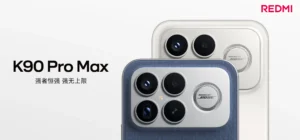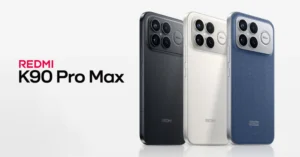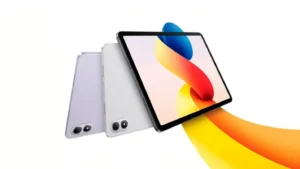Redmi Note 13 vs Redmi Note 13 Pro: A Comprehensive Comparison
The world of smartphones is constantly evolving, with rapid technological advancements. Xiaomi, a brand known for offering feature-rich devices at competitive prices, has recently unveiled two highly anticipated mid-range smartphones: the Redmi Note 13 and the Redmi Note 13 Pro. These devices, although part of the same series, cater to different segments of the market. In this detailed analysis, we will dive deep into these devices, exploring their strengths, weaknesses, and everything in between.

Xiaomi Redmi Note 13 vs Xiaomi Redmi Note 13 Pro
| Feature | Xiaomi Redmi Note 13 | Xiaomi Redmi Note 13 Pro |
|---|---|---|
| Release Date | September 21, 2023 | September 21, 2023 |
| Weight & Thickness | 173.5g, 7.6mm | 187g, 8mm |
| Operating System | Android 13, MIUI 14 | Android 13, MIUI 14 |
| Storage Options | 128GB/256GB, no card slot | 128GB/256GB/512GB, no card slot |
| RAM | 6-12GB | 8-16GB |
| Processor | Mediatek Dimensity 6080 | Qualcomm Snapdragon 7s Gen 2 |
| Battery | 5000mAh, Li-Po | 5100mAh, Li-Po |
| Display Type & Size | AMOLED, 6.67 inches | OLED, 6.67 inches |
| Resolution | 1080×2400 pixels | 1220×2712 pixels |
| Main Camera | 100 MP (wide), 2 MP (depth) | 200 MP (wide), 8 MP (ultrawide), 2 MP (macro) |
| Selfie Camera | 16 MP | 16 MP |
| Video Capability | 1080p | 4K@30fps, 1080p@30/60/120fps |
| Audio Jack | Yes | Yes |
| Connectivity | Bluetooth 5.3, No NFC | Bluetooth 5.2, NFC (market/region dependent) |
| Charging | 33W wired | 67W wired, PD3.0, 100% in 44 min (advertised) |
| Colors Available | Black, White, Blue | Black, White, Violet, Blue |
| Price (approximate) | About 140 EUR | About 180 EUR |
This table provides a side-by-side comparison of the two models, making it easier to identify their differences and similarities.
Design: Form Meets Function
In the age of aesthetics, a smartphone’s design plays a pivotal role in a consumer’s purchasing decision. The Redmi Note 13, with its sleek dimensions of 161.1 x 75 x 7.6 mm and a weight of 173.5g, embodies Xiaomi’s commitment to crafting ergonomic devices. Its slim profile and lightweight design ensure a comfortable grip, ideal for extended use. On the other hand, the Redmi Note 13 Pro, while slightly bulkier at 187g and with dimensions of 161.2 x 74.3 x 8 mm, offers a more robust feel. Some users associate a bit of heft with durability and premium quality, making the Pro variant a preferred choice.
Display: A Window to the Digital World
The display is a smartphone’s window to the digital world. Both the Redmi Note 13 and its Pro counterpart feature a 6.67-inch Full HD+ AMOLED display. AMOLED panels are renowned for vibrant color reproduction, deep blacks, and energy efficiency. Whether you’re streaming content, gaming, or reading, these devices promise a visually stunning experience. However, the Pro variant might offer additional features like a higher refresh rate or enhanced protection against scratches and drops, enhancing the user experience, particularly for those who prioritize display quality.
Specs & Software: Power and Performance
The heart of any smartphone is its processor, and here’s where the two devices diverge. The Redmi Note 13 is powered by the Mediatek Dimensity 6080, an octa-core processor clocked at 2.4 GHz. Mediatek chipsets offer reliable performance without breaking the bank. Whether you’re multitasking or gaming, the Redmi Note 13 delivers a lag-free experience. In contrast, the Redmi Note 13 Pro boasts the Qualcomm Snapdragon 7s Gen 2, an octa-core processor also clocked at 2.4 GHz. This device is designed for power users, excelling in tasks like 4K video editing and running multiple apps simultaneously.
In the digital age, ample storage is crucial, and the Redmi Note 13 offers a range of configurations, from 6 GB RAM and 128 GB storage to 12 GB RAM and 256 GB storage. The Pro variant goes further, starting with 8 GB RAM and 128 GB storage and going up to a whopping 16 GB RAM and 512 GB storage. This makes the Pro version ideal for those who need ample space for resource-intensive tasks.
Both devices run on Android 13 with Xiaomi’s MIUI skin, known for its user-friendly interface and customization options. The Pro variant may offer additional features or optimizations to leverage its superior hardware.
Camera: Capturing Life’s Moments
In an era dominated by social media, camera capabilities are paramount. The Redmi Note 13 features a dual-camera setup with a 100 MP primary sensor and a 2 MP depth sensor, promising sharp photos and beautiful bokeh effects. The Pro variant raises the bar with a triple camera setup, including a game-changing 200 MP primary sensor, an 8 MP ultra-wide sensor, and the consistent 2 MP depth sensor, delivering professional-quality photos and enhanced versatility.
Battery: Powering Your Day
A smartphone’s battery life is crucial, and both the Redmi Note 13 and its Pro sibling excel in this aspect. The Note 13’s 5000 mAh battery, combined with its energy-efficient AMOLED display and Mediatek processor, ensures lasting performance. The Pro variant, with its slightly larger 5100 mAh battery and more efficient Snapdragon processor, promises even better longevity. The Pro version’s 67W fast charging ensures quick recharging when needed.
Price: The Bottom Line
Price plays a pivotal role in a consumer’s decision-making process. While exact prices may vary by region and promotions, evaluating the value proposition is essential. The Redmi Note 13, starting at €140 or $120, offers a balanced mix of features and performance, ideal for budget-conscious users who won’t compromise on essentials. The Redmi Note 13 Pro, starting at €180 or $160, comes with a higher price tag but offers superior performance, enhanced camera capabilities, faster charging, and potentially more premium features. It’s an excellent choice for those who view their smartphone as an investment.
Xiaomi Redmi Note 13 vs Xiaomi Redmi Note 13 Pro: Pros and Cons
Xiaomi Redmi Note 13
Pros:
- More affordable
- More minimalistic
- Lighter
- Thinner
Cons:
- Inferior camera
Xiaomi Redmi Note 13 Pro
Pros:
- Better display
- Superior cameras
- Bigger battery
- Faster charging
- Better chipset
Cons:
- Higher price
Redmi Note 13 Pro
In conclusion, both the Xiaomi Redmi Note 13 and Redmi Note 13 Pro have their unique strengths and cater to different consumer preferences. The choice ultimately depends on your priorities and budget. Whether you opt for the budget-friendly Redmi Note 13 or the feature-packed Redmi Note 13 Pro, Xiaomi continues to deliver impressive smartphones.
Xiaomi Redmi Note 13 Prospect Consumer
The Xiaomi Redmi Note 13 is likely to appeal to a broad spectrum of consumers, especially those seeking a balance between performance and budget. Its target market includes young professionals, students, and tech enthusiasts who require a reliable, high-performing device without breaking the bank. The combination of a robust MediaTek Dimensity 6080 processor with options of up to 12GB RAM makes it suitable for everyday tasks, moderate gaming, and multimedia consumption.
Its 100MP main camera is a significant draw for photography enthusiasts who are looking for high-resolution imaging without the premium price tag of flagship models. The large 5000mAh battery caters to users with active lifestyles, ensuring long-lasting performance throughout the day. The lack of NFC might not deter the budget-conscious segment, who may prioritize essential features over additional connectivity options. The phone’s sleek design and varying storage options also make it an attractive choice for those who desire a stylish yet functional smartphone.
Xiaomi Redmi Note 13 Pro Prospect Consumer
The Xiaomi Redmi Note 13 Pro targets a slightly more upscale market, including tech-savvy individuals and mobile gaming enthusiasts. This model is an ideal fit for consumers who are willing to invest a bit more for enhanced features. The standout feature is its triple camera setup led by a 200MP main sensor, which is a significant attraction for photography enthusiasts and content creators looking for superior image quality in a mid-range phone.
With its Snapdragon 7s Gen 2 chipset and options for up to 16GB of RAM, the Redmi Note 13 Pro is well-suited for demanding applications and games, attracting gamers and power users. The inclusion of NFC and a higher-resolution OLED screen with Dolby Vision support also makes it appealing to those who value advanced connectivity and superior display technology. Furthermore, the fast 67W charging is a significant advantage for users with busy lifestyles, providing rapid battery replenishment. Given its higher price point, the Redmi Note 13 Pro is aimed at consumers who prioritize advanced features and superior performance in their mobile devices.
Xiaomi Redmi Note 13 vs Redmi Note 13 Pro
Explore the detailed comparison between Xiaomi Redmi Note 13 and Redmi Note 13 Pro to make an informed choice. Learn about their specs, design, camera, and more.
Tags: Xiaomi, Redmi Note 13, Redmi Note 13 Pro, smartphone comparison, MIUI, Android 13, AMOLED display, camera capabilities, battery life, processor, design, pricing.
@theaguscts Redmi Note 13 Pro vs Redmi Note 13 Pro Plus 红米Note 13 Pro vs 红米Note 13 Pro+ #RedmiNote13 #RedmiNote13Pro #RedmiNote13ProPlus #RedmiNote13Pro+ #红米Note13Pro #红米Note13ProPlus #红米Note13Pro ♬ sonido original – TheAgusCTS








15 thoughts on “Redmi Note 13 vs Redmi Note 13 Pro: A Comprehensive Comparison”